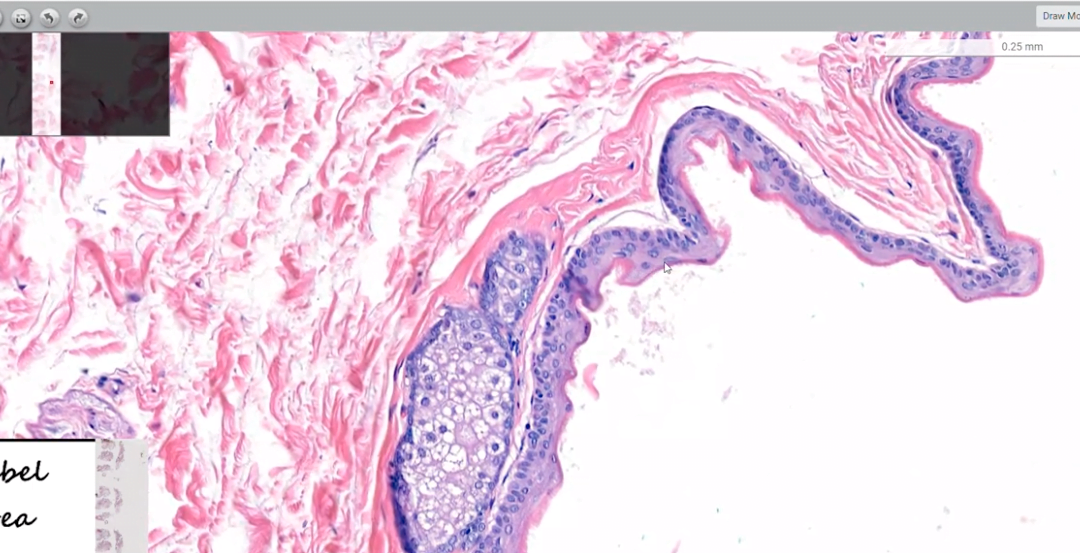Images shown are not intended to be used for the diagnosis or treatment of a disease or condition.
If you encounter a patient with bumps, typically measuring one to two centimeters wide (though they can be larger in diameter), that formed under relatively normal-looking skin and appear predominantly on the person’s chest, upper arms, neck, face, and legs, it may be steatocystoma.
In this episode of Digital Dermpath Digest, Rajni Mandal, MD, a dermatopathologist at PathologyWatch, discusses distinct features of steatocystoma and how to identify it.
What Is Steatocystoma?
Occurring mainly in teenagers and young adults, steatocystoma is a benign and rare cyst that originates in the hair follicle or sebaceous duct, where the sebaceous gland drains into the hair follicle. When incised, a steatocystoma, often referred to as a sebaceous cyst, will secrete a thick, oily, yellowish fluid, and the area collapses when sectioned.
Signs Below the Surface
But what’s happening below the skin’s surface that makes a steatocystoma so unique?
“Viewed under a digital viewer, the multiplex variant of steatocystoma can be seen with keratin type 17 mutation,” explains Mandal.
The most notable symptom is the cyst’s epidermal lining that has a “red roof” or a “shark tooth” cuticle appearance devoid of a granular layer. “Sebaceous glands also appear in the cyst wall,” says Mandal.
Though the cysts grow slowly, most patients desire to have them removed to avoid infection and discomfort should the cyst become inflamed or burst.
To learn more about this skin condition and other common diseases, join us for each episode of Digital Dermpath Digest right here on pathologywatch.com.

